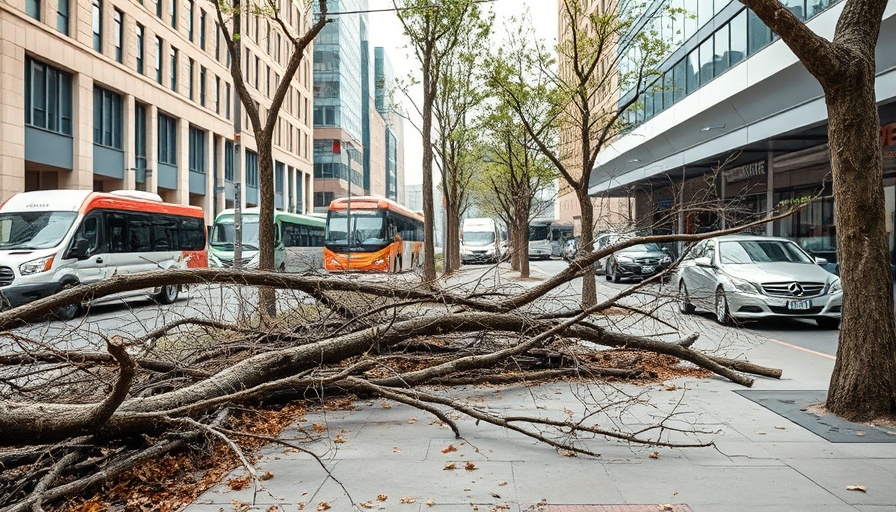
The Havoc Wreaked by a Chainsaw in Los Angeles
In an alarming episode reminiscent of Hollywood horror films, the Los Angeles Police Department (LAPD) apprehended a suspect behind the mass destruction of city trees in three neighborhoods. This incident, dubbed the 'chainsaw massacre' of city trees, reflects not only on environmental concerns but also stirs public emotions regarding community safety and government stewardship.
The Impact on the Community
Residents were outraged as reports of the destruction surfaced last Friday. Multiple mature trees, some with impressive trunks and many identified as ficus, were felled, obstructing sidewalks and streets. The immediate response from the community has triggered discussions about the necessity for improved surveillance and a quicker response from local law enforcement in safeguarding urban flora.
Uncovering the Layers of Vandalism
The LAPD reported that numerous trees were indiscriminately cut down across several blocks, sparking a swift investigation that relied on community tips and surveillance. After early leads, including the release of a suspect’s image, police announced the arrest of a 45-year-old man, which raises more questions about his motives and potential underlying issues related to mental health or community discord.
The Response from City Officials
Mayor Karen Bass expressed severe dismay at the acts, describing the situation as “truly beyond comprehension.” This sentiment highlights that while trees may be regarded simply as environmental assets, they also play a pivotal role in community identity and ecological balance. City public works crews have already been mobilized to assess the damage and plan for the urgent replacement of these trees, emphasizing the city’s commitment to both public safety and environmental welfare.
A Broader Perspective on Urban Safety and Environmental Protection
This incident opens up discussions beyond just tree maintenance—it evokes concerns about urban safety policies. Law enforcement agencies are increasingly being called upon to adopt modern strategies, such as enhanced surveillance technologies and community engagement initiatives, to foster safer environments. This could pave the way for updated police community relations protocols and innovative methods to prevent such acts of vandalism in the future.
Future Implications for Law Enforcement
The LAPD's prompt response serves as a reminder of the importance of integrating technology in policing for urban management. Utilizing investigative tools and fostering public participation can lead to quicker resolutions and deter future acts of vandalism. The community’s active engagement in reporting suspicious activities demonstrates the critical relationship between residents and law enforcement—a necessary collaboration for enhancing public safety.
Conclusion: A Call for Action and Vigilance
As Los Angeles navigates the aftermath of this destructive event, it's a moment for reflection on the responsibilities of both city officials and residents. Preventing tree vandalism serves a broader purpose—ensuring a community that values its natural surroundings. All stakeholders, including law enforcement and local policymakers, are called to foster a proactive approach. Let's ensure we preserve not just our trees but also our collective commitment to environmental stewardship and public safety.
 Add Row
Add Row  Add
Add 

 Add Element
Add Element 




Write A Comment